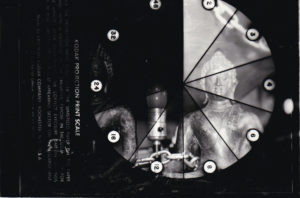This is Only a Test
I have a yearning to understand various artistic processes. For instance, I only buy movies on Bluray if they have commentary tracks from the director, writer, actors, or extensive behind the scenes material. I'm sure this fascination for wanting to know how things work started with one of those television specials revealing the methods behind the special effects in Star Wars.
 When I first started with B&W film I thought that getting the right exposure for a shot was all it took. Then I went down the rabbit hole of developing my own film and printing my own prints. There are so many ways to affect the final outcome of an image. Sure, it starts with the camera, but then a host of variables come into play for the development of the negative. How your negative turns out depends on the chemicals, the proper measurements, the temperature of the water, and how long the negatives develop just to name a few. From the negative you move on to the prints and there is a host of other variables such as the brightness of your enlarger light source, filters, type of paper, chemical baths, and the amount of time to expose the paper to the light. There are numerous tried and true formulas to get you started on these variables, but when it comes to the amount of time to expose the negative to the print you use a projection print calculator scale.
When I first started with B&W film I thought that getting the right exposure for a shot was all it took. Then I went down the rabbit hole of developing my own film and printing my own prints. There are so many ways to affect the final outcome of an image. Sure, it starts with the camera, but then a host of variables come into play for the development of the negative. How your negative turns out depends on the chemicals, the proper measurements, the temperature of the water, and how long the negatives develop just to name a few. From the negative you move on to the prints and there is a host of other variables such as the brightness of your enlarger light source, filters, type of paper, chemical baths, and the amount of time to expose the paper to the light. There are numerous tried and true formulas to get you started on these variables, but when it comes to the amount of time to expose the negative to the print you use a projection print calculator scale.
This is a nifty little piece of clear plastic that is laid over the undeveloped paper. A timer is set for 60 seconds, you project your negative on to the paper, develop the print, and voila you have a rough guess to the amount of time needed for your exposure. I've kept most of these through the years and still find them a fascinating look back at the process involved in making a print.


